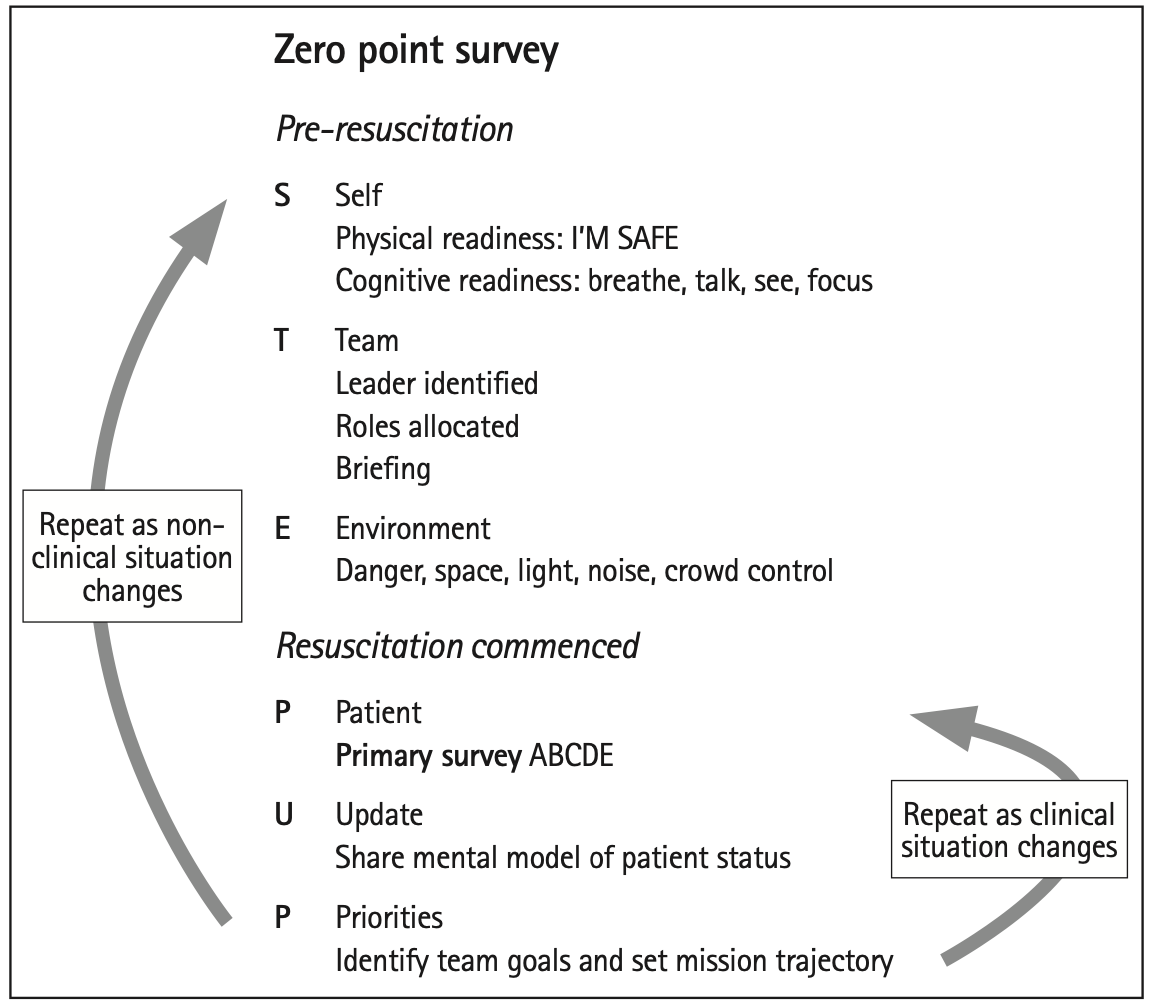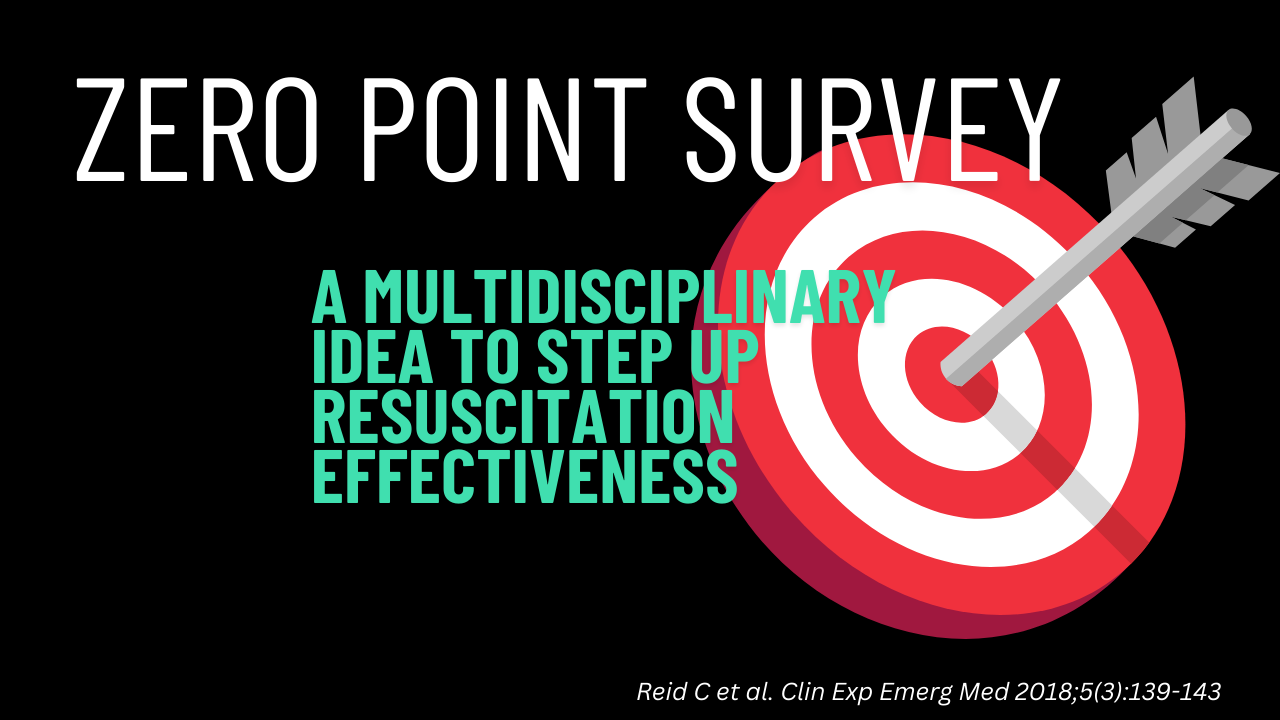The ‘zero-point survey’ is the pre-primary survey. It is about preparing self, the team, the environment and the equipment. It is a ‘cognitive roadmap’ to prepare for complex resuscitation cases.
These authors argue that the first step in a resuscitation, should not always be A B C, but should be the preparation for the resuscitation. They propose an approach that can be applied in the pre-hospital environment, the emergency department, the operating theatre and the ICU.
When I know a patient is coming in my approach is fairly standard:
- I will have a brief discussion with staff on the patient we are expecting and what we might do. We will assign staff early.
- We may pre-prepare infusions, open dosage books, get any equipment ready
- I will review the current guidelines or any material I have on the topic ( I have my own resource I call EM 101, that I have put together on my phone, which consists of a rapid synopsis of Presentation, Diagnosis, Management)
- If I have any formulas or mnemonics, like the ‘SHOCKED’ mnemonic, I write it on the whiteboard.
- I get nervous before every arrest. it’s a good kind of nervous. I remind myself of what I need to do and that I’ve done it before.
- Believe it or not, I may go to the bathroom, especially if it’s been a big shift and I haven’t had a break. I need no distractions.
- Just before the patient arrives, I have an ‘affirmation’ I say to myself and do what’s called a ‘powermove’ (it’s an Anthony Robbins’ thing). It might sound a little strange, but it gets me into the zone.
I used to think that I was a little strange doing some of this, especially reviewing guidelines that I had seen before, but it worked for me. It ‘primed’ me. It was a kind of anchoring, that prepared my mind for the situation. Then I read this study and it was good to see that I was in great company.
The Structure of the Zero Point Survey

The Parts of the Zero Point Survey
Self Check
- Optimize mental preparation; both self and that of the team. The preparedness approach is ‘breathe, talk, see, focus,’
- Personal preparedness can be achieved by using a checklist as in the acronym IM SAFE (illness, medication/other drugs, stress, alcohol, fatigue, eating/elimination)
- Techniques that minimize autonomic hyper-arousal, such as controlled breathing, reframing threats as challenges, reminding ourselves of previous training or reviewing resources such as guidelines, checklists, equipment, and team members).
- Active visualization and mental rehearsal predict and allow us to prepare for likely next steps.
Team Brief
- Identify a team leader and allocate roles.
- Use the patient information available , such as age, mechanism of injury, to develop mental models
- During the resuscitation, the team leader can optimize team performance by periodically verbalizing the patient status and the next priorities.
Environmental Scan
- Identify safety threats in the environment as well as the adequacy or otherwise of the environment.,
- “Is there enough space to safely manage this patient?”
- “If not, should we remove things away from the patient or move the patient away from these things?”
- The zero point survey should be repeated with any change, just as the primary survey may be.
VIEW THE EMCORE LECTURE on EMMASTERY
Reference
Reid, C et al. Zero point survey: a multidisciplinary idea to STEP UP resuscitation effectiveness. Clin Exp Emerg Med 2018;5(3):139-143.










